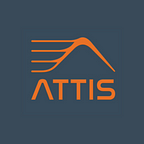METRIC MONDAY: Why Overstriding matters
Welcome back to #MetricMonday, everyone!
For those who are new to this series, Metric Monday sees us take an in-depth look at a range of metrics which impact your running, one by one, detailing their importance, what they mean, and how understanding and working to improve on each metric can help you in your running performance.
By understanding and working on these metrics for those crucial, performance-boosting marginal gains, you can improve on the key aspects of your form and technique and become a consistently better runner.
As we return to the series, we’re kicking off with a look at one of the more popular running metrics of recent times – overstriding.
This is a metric that feeds into many other aspects of your running, and has a big influence on a fair few aspects of your overall performance. Read on below!
What is overstriding?
Overstriding is when your foot lands too far out in front of your centre of mass as you run. It’s one of the most common problems runners face in their form, and is a persistent issue for runner’s gait.
If you’ve heard the term before — and that’s pretty likely for most runners– then you’ll know that almost most it’s seen as a bad trait, but it’s also one that’s not impossible to overcome and improve upon.
Why is it important?
The reason overstriding can be a problem for many runners is that, in placing too much emphasis on your foot that’s too far forward, you create a brake that halts your momentum — and needless to say, that’s not good.
What’s more, if you’re committed to overstriding as you run, you’re also landing pretty heavily on your heel, meaning your body is not fully balanced.
There’s also the impact that this can have on your joints. Your knee, which will be more stretched as your leg strides forward, has a lessened ability to take in the impact and shock of your foot hitting the ground when you’re overstriding. As such, this will increase the level of pressure on your knees, and can seriously increase the risk of injury. Again – not good!
So, put simply, if you’re consistently overstriding when you’re running, then your performance becomes less efficient, economical and slower, while also factoring in some potentially dangerous injury risks.
How can you avoid overstriding?
Now that we know what overstriding is, it’s important to gage what type of runner is typically found overstriding when they run.
It’s more commonly found in beginner runners who are still learning how to make their running more efficient, but that’s not to say it can’t be seen in more serious runners too. A lot of the time, runners may have never learnt to fix the problem — or acknowledge it was there in the first place.
Thankfully, like many aspects of running, there are ways to overcome overstriding to ensure for a better, safer running style.
Some studies have found that runners with too low a cadence (somewhere below the 170 steps per minute mark) may find a correlation with overstriding, as they’re compensating for fewer steps with a bigger stride. In that case, working on cadence to have a higher number of steps will also alleviate the need for overstriding and fix said problem. As a rule of thumb, more steps, smaller strides is a safer and more efficient running style and one we recommend!
Others have highlighted how poor posture is the root cause of most overstriding. When your head, neck and shoulders are overly forward, you’re alignment will be off, and therefore your balance is too. Having a straighter, better balanced and aligned posture may be the remedy for your overstriding if this sounds like you.
But do you want to know the easiest way to stop overstriding? Well, if you really want to fix your running metrics, the best way is by measuring your running performance with STRIDESENSE.
STRIDESENSE tracks your running performance across 10 specialised metrics –including overstriding — that you won’t find in any other fitness tracker out there.
By measuring your running using STRIDESENSE’s 3D motion tracking sensors, you can see your performances via the visualiser in our app, alongside breakdowns of your metric performance data and beat your targets.
We suggest that experienced runners should aim for your lower leg to be perpendicular to the ground, which is shown as zero degrees on the STRIDESENSE app.
That said, somewhere between -5 and +5 is a great score to be regularly aiming for, and will help you consistently improve your overstriding and work towards a far more economical, efficient and safer running performance.
Visit our website to get yours today: attisfitness.co.uk
